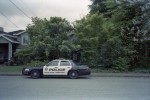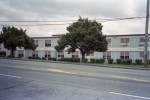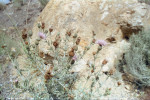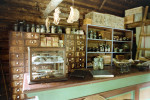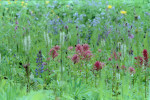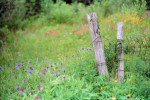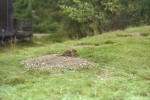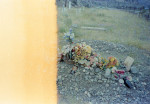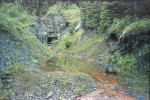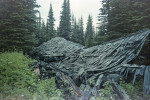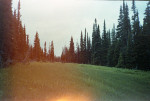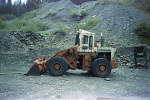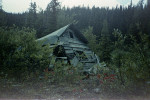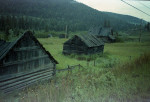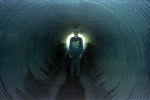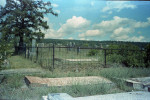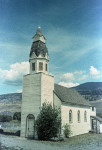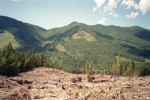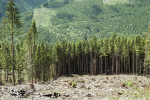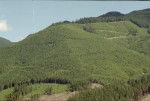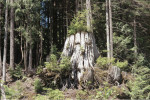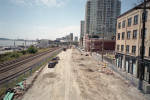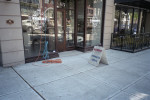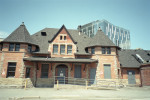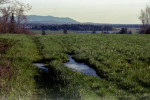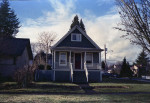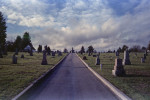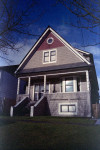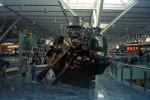Sep
16
2017
 Looking back at the 1990’s at some point in a camera advertisers career it must have become difficult to come up with new ways to describe the same features in an exciting way. How else can you explain this line about the PZ500 “…and a tripod socket, permitting the camera to be mounted anywhere on a tripod to take advantage of the self-timer and of the non flash exposure option” I feel that advertisers pain as I struggle to write about what sometimes amounts to the same camera in new packaging. But here we go. The Vivitar PZ500 sports a 35-70mm zoom lens that they suggest is a ‘Series 1 Optic’. Funny how they never had any other Series that they were proud of. The aperture goes from f4 at 35mm to f7.6 at 70mm. The zoom control is a clear rocker switch on the top that has the indicator LCD beneath.
Looking back at the 1990’s at some point in a camera advertisers career it must have become difficult to come up with new ways to describe the same features in an exciting way. How else can you explain this line about the PZ500 “…and a tripod socket, permitting the camera to be mounted anywhere on a tripod to take advantage of the self-timer and of the non flash exposure option” I feel that advertisers pain as I struggle to write about what sometimes amounts to the same camera in new packaging. But here we go. The Vivitar PZ500 sports a 35-70mm zoom lens that they suggest is a ‘Series 1 Optic’. Funny how they never had any other Series that they were proud of. The aperture goes from f4 at 35mm to f7.6 at 70mm. The zoom control is a clear rocker switch on the top that has the indicator LCD beneath.  Now at least that is unique. The focus system is 35 zones which seems like plenty all things considered having hundreds of possible distance settings as some point and shoots have may just be more marketing hype. All kidding aside the lens is actually pretty good and the only shot that seems slightly out of focus is one where I took a picture through a chain link fence. I think the choice of a very conservative 2X zoom starting at 35mm allows for even lighting (no vignetting) and low optical aberrations. I added the tape to the battery door more as insurance than out of absolute necessity. One thing about one camera: The Vivitar PZ500 is essentially the same camera as the Leica mini zoom both being manufactured by Matsushita and having the same specifications except for the Leica name.
Now at least that is unique. The focus system is 35 zones which seems like plenty all things considered having hundreds of possible distance settings as some point and shoots have may just be more marketing hype. All kidding aside the lens is actually pretty good and the only shot that seems slightly out of focus is one where I took a picture through a chain link fence. I think the choice of a very conservative 2X zoom starting at 35mm allows for even lighting (no vignetting) and low optical aberrations. I added the tape to the battery door more as insurance than out of absolute necessity. One thing about one camera: The Vivitar PZ500 is essentially the same camera as the Leica mini zoom both being manufactured by Matsushita and having the same specifications except for the Leica name.
no comments | posted in Cameras, Photography, Uncategorized
Sep
5
2017
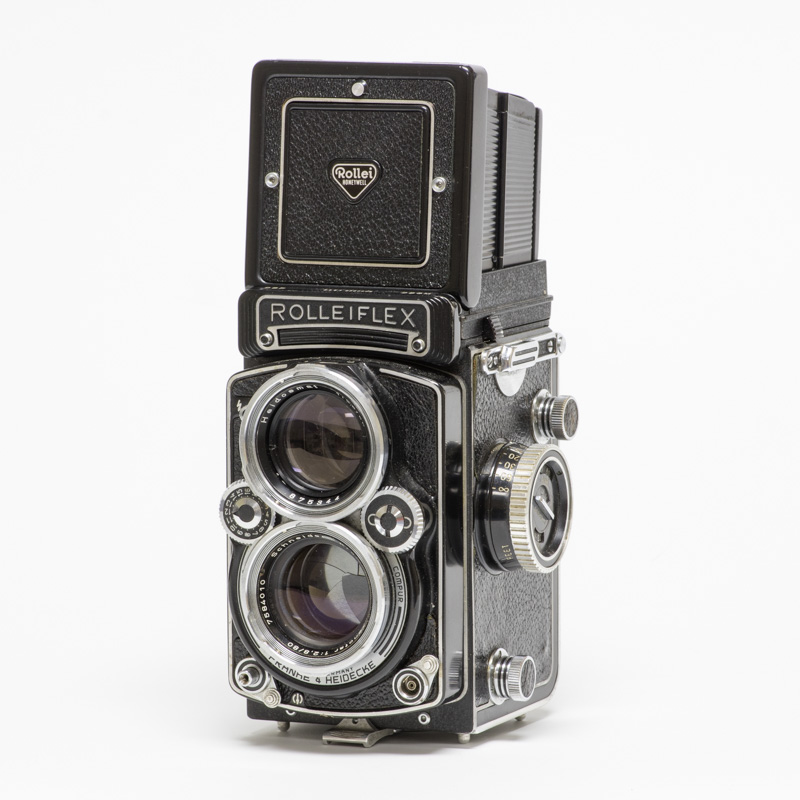
As I mentioned in a previous post I returned to the Harrison West area to photograph the aftermath and regrowth post wildfire. Each time I took along my Rolleiflex TLR both for its large medium format negative and because for this slower tripod set up its a joy to look at the image your composing on the ground glass. Originally I had intended to set up the camera in the exact same location and view but I forgot to bring along the previous image so I composed the second one from memory. Just the same you can see that the forest has begun the process of regrowth.
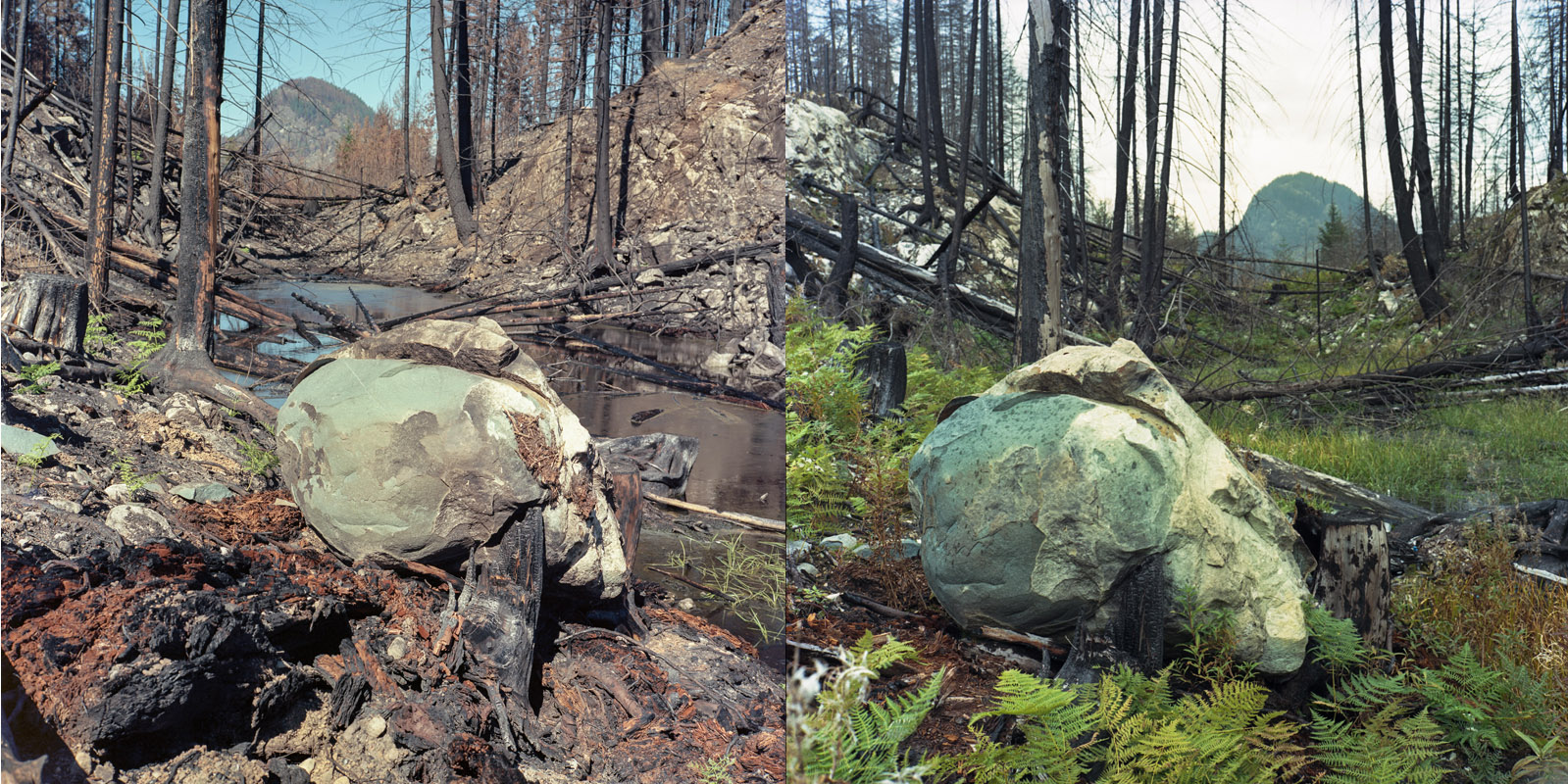
Some further images. While the elapsing of one year is interesting I look forward to seeing greater changes in the future. In some areas you can see that an effort has already been made to plant new trees among the charred remnants of the previous forest.
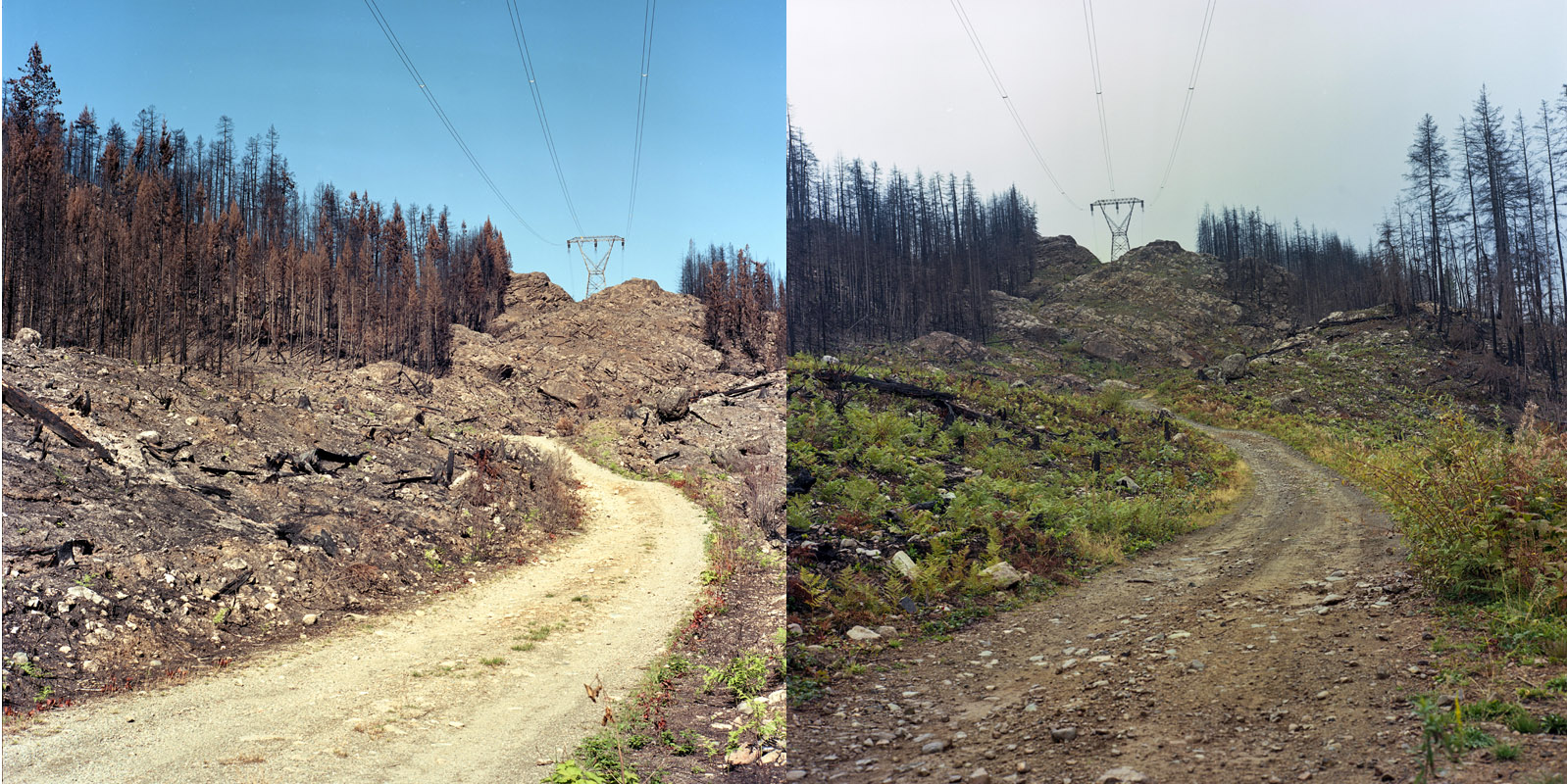
In the following case I took the second image not even remembering having taken an image of that particular log previously.
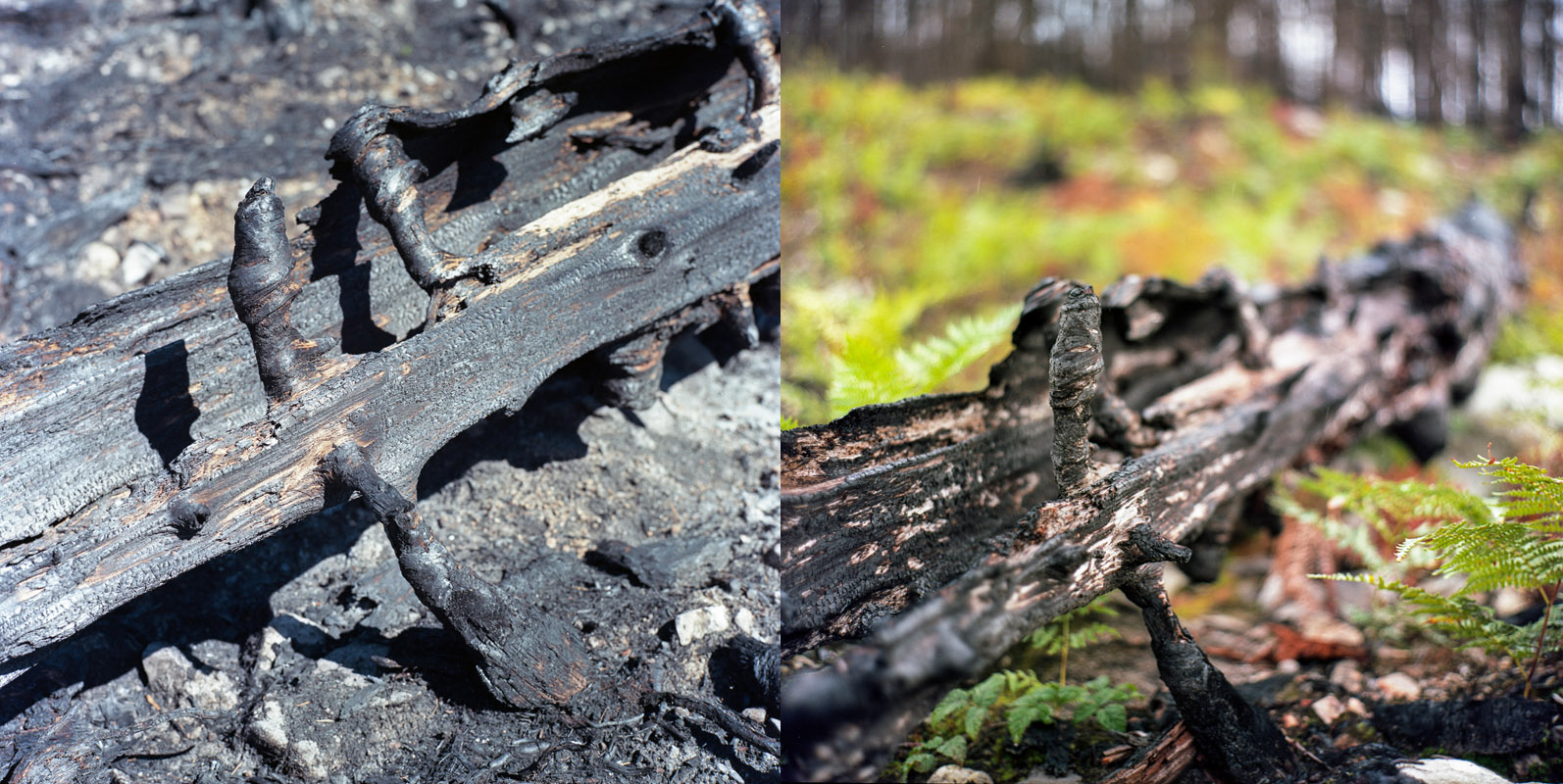
And finally other images from that roll of 12




no comments | posted in Art observations, Cameras, Photography
Aug
30
2017
 The EF3 came in a number of colours and Konica marketed it as ‘The Fashion conscious camera’ back in 1983. Regrettably mine is plane old black but still does an admiral job. The primary reason being the 35mm F2.8 lens with 5 elements. As a camera with a fully automatic exposure system though you can’t select a manual aperture which can be an issue with zone focusing. The easiest way to use zone focusing involves pre-setting it to a distance and then snapping the picture when the subject is at that distance. In order for this to work well it requires a certain amount of leeway with the depth of field. The problem with the EF3 as I mentioned is the lack of control of the depth of field through setting the aperture. If the camera chooses f2.8 there is a higher probability of the subject being out of focus. However in adequate light and with a fast enough film the camera is bound to stop down the aperture and the number of in focus shots will improve as well as the optical quality.
The EF3 came in a number of colours and Konica marketed it as ‘The Fashion conscious camera’ back in 1983. Regrettably mine is plane old black but still does an admiral job. The primary reason being the 35mm F2.8 lens with 5 elements. As a camera with a fully automatic exposure system though you can’t select a manual aperture which can be an issue with zone focusing. The easiest way to use zone focusing involves pre-setting it to a distance and then snapping the picture when the subject is at that distance. In order for this to work well it requires a certain amount of leeway with the depth of field. The problem with the EF3 as I mentioned is the lack of control of the depth of field through setting the aperture. If the camera chooses f2.8 there is a higher probability of the subject being out of focus. However in adequate light and with a fast enough film the camera is bound to stop down the aperture and the number of in focus shots will improve as well as the optical quality.
A major limitation though is the narrow shutter speed range of 1/60 – 1/500 second which is good for reducing camera shake but again forcing the need for the larger apertures.
no comments | posted in Cameras, Photography
Aug
12
2017

The Kodak T550 is a diminutive camera that separated itself from the rest of the APS pack with a flash that flipped up from its other duty as a lens cover. The 28mm f3.5 lens gives an angle of view similar to a 35mm lens on a 35mm film camera when you use the entire film area of 30.2mmx16.7mm. With each APS exposure the full image area is recorded and with that also recorded magnetically the aspect ratio setting the user had selected. There were three settings known as H (high definition), C (Classic) and P (Panoramic) so while the entire image area was always recorded, during printing the machine would read the magnetic info and crop the images accordingly. I prefer to use the full 16:9 aspect ratio for composing images as it is the one interesting thing about APS film. And it shouldn’t be a surprise but I used out of date non refrigerated film with an unknown history as that is my primary source of APS film.
no comments | posted in Cameras, Photography, Uncategorized
Aug
1
2017

This is my second Minolta Freedom Vista, the first one I had was stolen with a few other items from my vehicle. This one is every bit as beat up as that one was but despite the weathered look it performed well. I do need to find and remove all the little fibers that must be around the edge of the film mask as they show up on every image. The defining feature of this camera is of course its ability to shoot panoramic images with its 24mm lens. The caveat being that it can not be used to create anything other than panoramas. Having this sole purpose though allowed Minolta to provide it with a nice large viewfinder dedicated to the effort, and it makes composing with such a different aspect ratio fun. That aspect ratio is a wide 2.6:1 which falls among various widescreen cinematic ratios.
The lens on the Freedom Vista is a 24mm f4.5 with five elements. It’s only at the outer edges where the chromatic aberrations really show themselves which is amazing considering how thin the camera is and how close to the film plane this places the lens.

So in summary composing with this camera offers some small opportunity to try your hand at creating unique compositions and the large single purpose viewfinder is superior to any other point and shoot that offers a panoramic mode.
no comments | posted in Cameras, Photography
Jul
14
2017
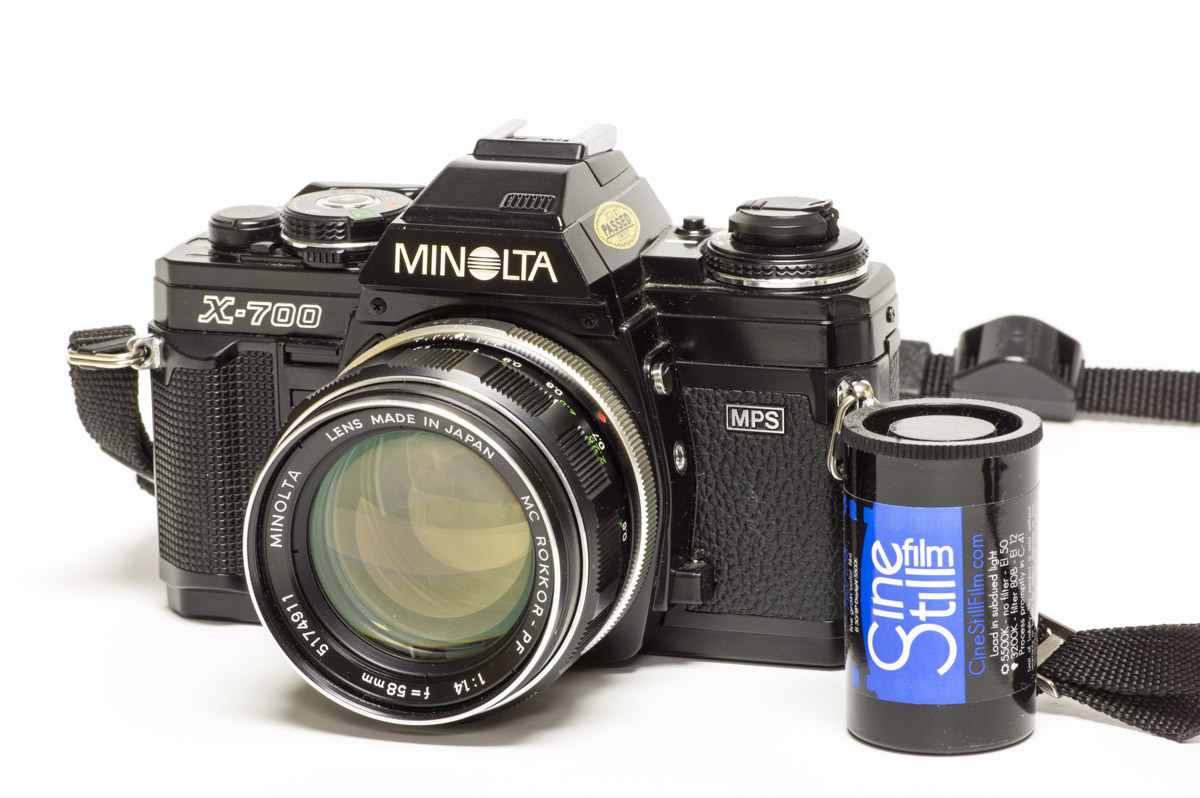
Cinestill 50D is a unique 35mm daylight film that starts life as Kodak Vision3 50D movie film before Cinestill removes the rem-jet layer and packages it into 35mm canisters so you can put it into a regular 35mm still camera. I loaded a roll into my Minolta X700 for a try as I’m always looking for something unique. The ‘D’ in 50D refers to the colour balance of the film which is nominally 5500K.. What they mean is that under the light of the sun items will have accurate colour representation. So something like a white sheet would appear white when scanned without adjustment. We don’t often speak about films as daylight or tungsten balanced any more but it points to this films origin as a movie film where a distinction like this is more important.
I find that the un edited scanned files from Cinestill 50D are quite muted and require an increase in saturation to reach a more natural result as seen bellow.
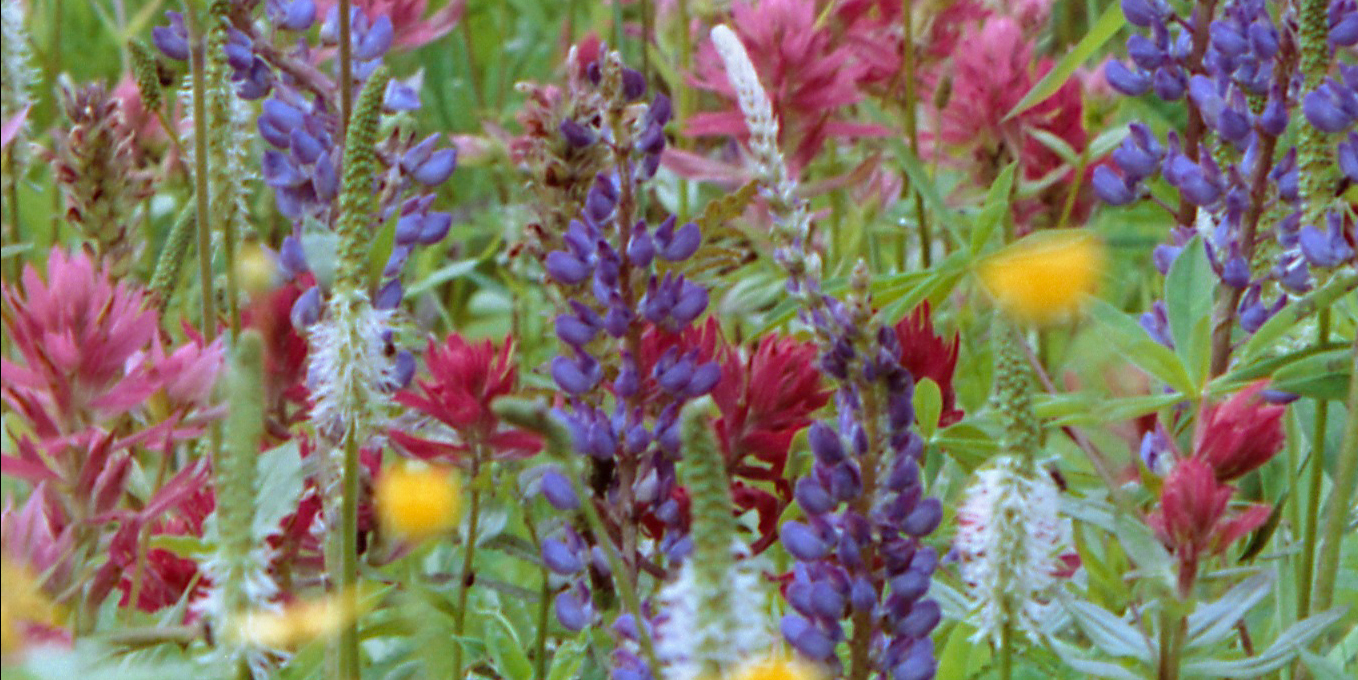
The film is very fine grained as expected as it originates as Kodak Vision 3 50D which they advertise as the worlds finest grain film. Kodak Ektar is also described as the worlds finest grain colour negative film. Unfortunately grain values are provided using different methods for the two films so they are not easily compared using data sheets. However I can say that they are both incredibly fine grained to the point that even with a 16×20 print the grain will not be that visible at normal viewing distances. The grain is more pronounced in areas of under exposure but still remains very low with a small amount of colour mottling.
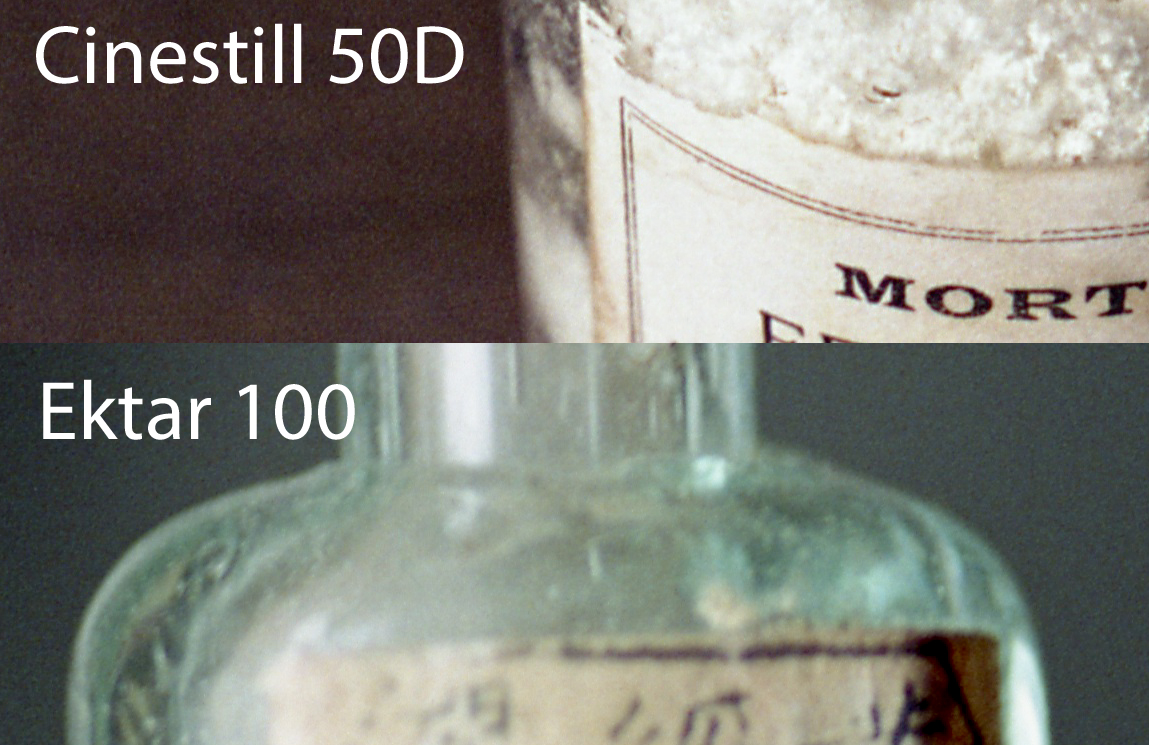
Like other current Cinestill films in order to make them developable in regular C41 processes its necessary for them to pre-remove the remjet anti halation layer. With Cinestill 800T this can result in interesting halos around light sources as bright light is scattered and reflected within the film base. I didn’t see much evidence of this with Cinestill 50D however even when trying to cause it.
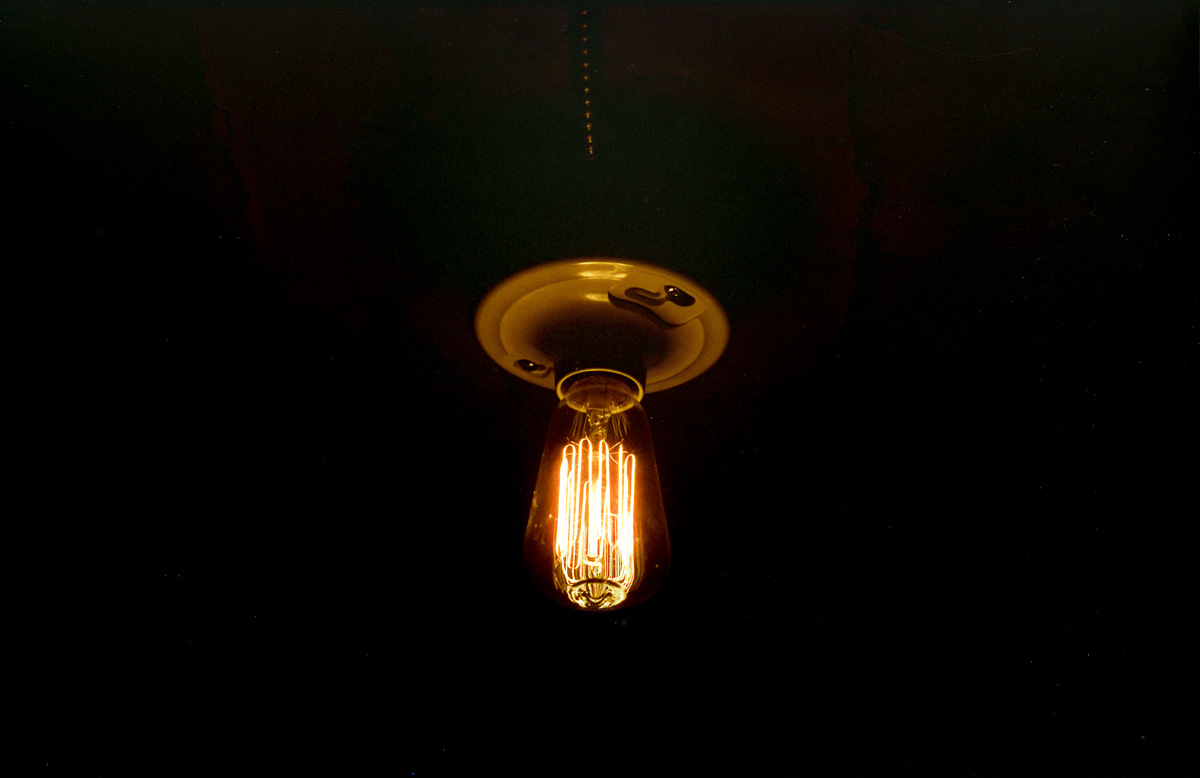
You can consider Cinestill 50D to be the equivalent to a RAW file in digital terms, it is able to capture as much detail as possible. In fact its ability to preserve highlights makes it an excellent choice when that is important. The downside is that it requires some saturation and colour adjustment to achieve a natural result much like a digital RAW file would. This shouldn’t be surprising as Vision 3 film is intended to be used as part of a film to digital work flow that includes digital post production.
1 comment | posted in Cameras, Photography
Jul
2
2017
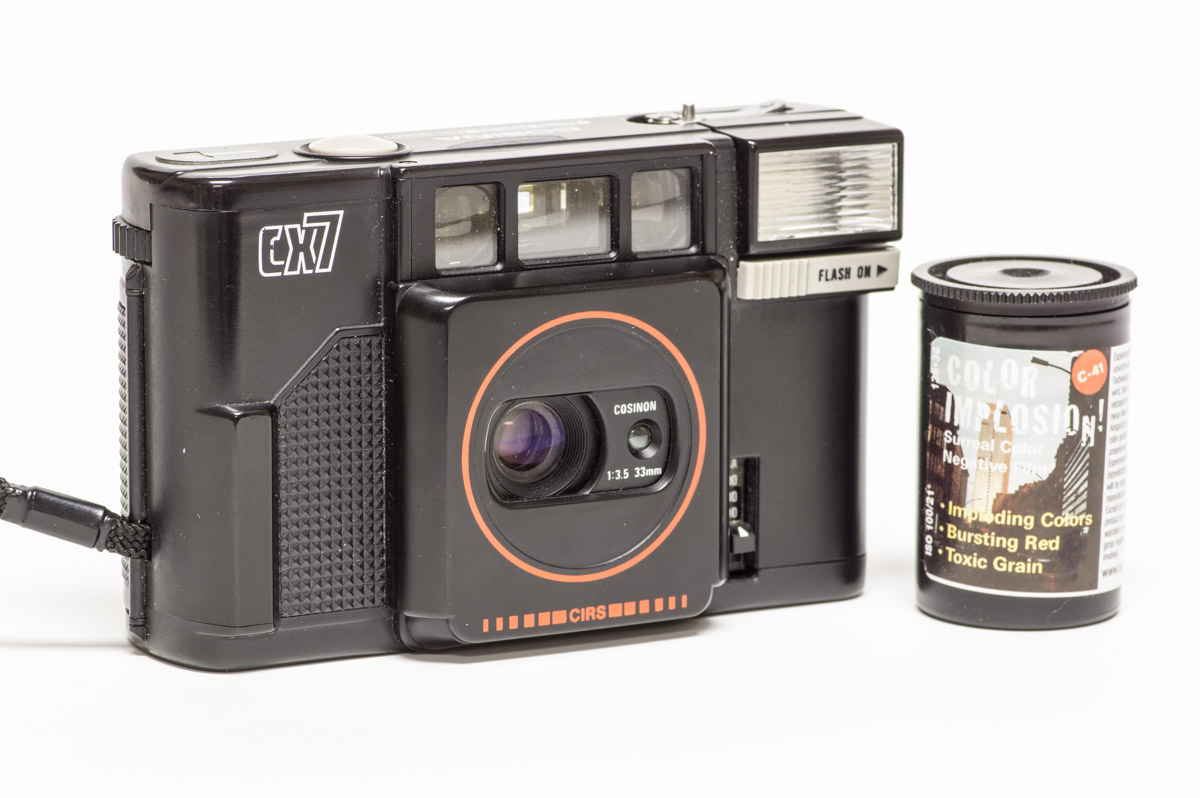
Adox color implosion is a film that gives a look that could have come from a camera left on the dashboard of a 1984 Oldsmobile. That’s why I paired it up with the Cosina CX7 they were made for each other.
With Adox Color Implosion shot with a little underexposure in drab light the only thing that you get is grainy pictures but if you feed it some bright light that’s when it shows its ‘true colours’. And by true colours I mean cartoonish cerulean sky’s and deep crimson reds.
Here is a detail of the unique grain you get from Color Implosion

The CX-7 has a 33mm f3.5 lens with 4 elements and a shutter that goes to 1/600 sec along with a fairly powerful flash. Some other postings about the CX7 Happy as a clam shell Cosina CX7 Oct 2009
no comments | posted in Cameras, Photography
Jun
25
2017
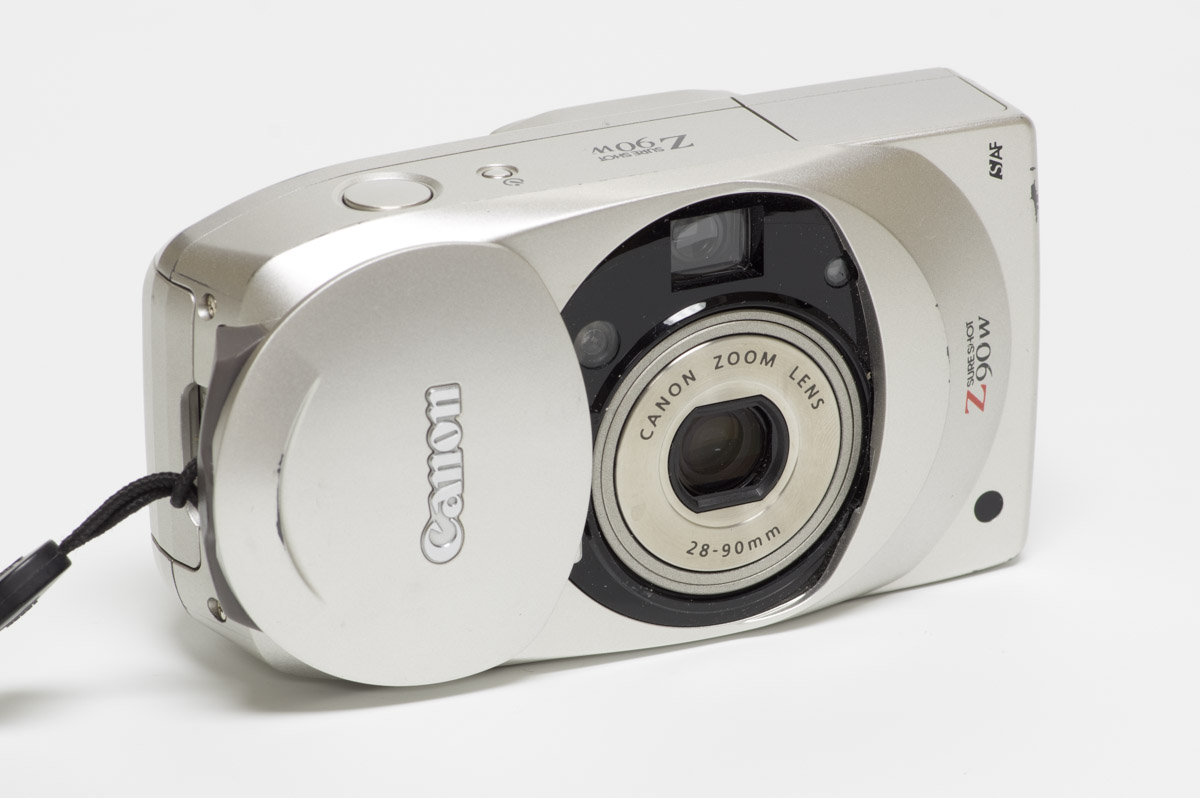
This is one of the cameras that I wanted to take on a trip because of its wide angle and ability to force the flash off. I have never had any issues with it and have always been pleased with the results but I wanted to test it anyway. So in goes the Fuji 200 and out come these images.
Other posts about this camera here: Canon Z90W Oct. 2015 , Canon Z90W May 2013
The lens is made using 7 elements two of which are aspherical, the overall result is reasonably sharp images with little vingetting and well controlled aberrations.
Here is a crop from the image of a wildflower that gives an idea of the amount of detail that is captured with this camera and 35mm film combination which I’ve stated before can be in the neighborhood of a 14mpixel equivalency as far as the amount of useful information captured although the images will have that film look.

no comments | posted in Cameras, Photography
Jun
8
2017

Pentax may have been the most prolific manufacturer of mediocre point and shoots. To clarify all but a few premium point and shoots fit into that category so they had competition from almost every camera maker but for shear quantity of middling quality Pentax takes the cake. I don’t know what the actually sales figures were but based on the percentage of Pentax cameras found in thrift stores one can surmise. So in no way does this camera rise to the top of the pile, it provides a 38-140mm zoom of f 5.8 – 11.8 and pretty standard features. The only nice things about this camera are the sliding lens cover and the blue backlit top LCD display. These touches set it apart from the more common pile dwellers the Espio 140 and Espio 140M.
no comments | posted in Cameras, Photography
May
24
2017

The lens of the Yashica Micro Finess is a 33mm f3.5 triplet nothing fancy just functional. The first triplet lenses date all the way back to 1893 and are considered the simplest lens that can correct most aberations. I haven’t been able to find much other information about this camera. One magazine from the time suggested that it had similar specifications to the T4 although with the Triplet lens rather than the Zeiss Tessar of the T4. This does seem plausible when you consider that it can accommodate film DX coding from 50-3200 which was unusual for an inexpensive camera at that time. Whatever it might borrow from Yashica’s parts bin it is ultimately a middle of the road camera with a middle of the road wide-angle lens. As is often the case I used severely expired Kodak 400 in this camera.
no comments | posted in Cameras, Photography
 Looking back at the 1990’s at some point in a camera advertisers career it must have become difficult to come up with new ways to describe the same features in an exciting way. How else can you explain this line about the PZ500 “…and a tripod socket, permitting the camera to be mounted anywhere on a tripod to take advantage of the self-timer and of the non flash exposure option” I feel that advertisers pain as I struggle to write about what sometimes amounts to the same camera in new packaging. But here we go. The Vivitar PZ500 sports a 35-70mm zoom lens that they suggest is a ‘Series 1 Optic’. Funny how they never had any other Series that they were proud of. The aperture goes from f4 at 35mm to f7.6 at 70mm. The zoom control is a clear rocker switch on the top that has the indicator LCD beneath.
Looking back at the 1990’s at some point in a camera advertisers career it must have become difficult to come up with new ways to describe the same features in an exciting way. How else can you explain this line about the PZ500 “…and a tripod socket, permitting the camera to be mounted anywhere on a tripod to take advantage of the self-timer and of the non flash exposure option” I feel that advertisers pain as I struggle to write about what sometimes amounts to the same camera in new packaging. But here we go. The Vivitar PZ500 sports a 35-70mm zoom lens that they suggest is a ‘Series 1 Optic’. Funny how they never had any other Series that they were proud of. The aperture goes from f4 at 35mm to f7.6 at 70mm. The zoom control is a clear rocker switch on the top that has the indicator LCD beneath.  Now at least that is unique. The focus system is 35 zones which seems like plenty all things considered having hundreds of possible distance settings as some point and shoots have may just be more marketing hype. All kidding aside the lens is actually pretty good and the only shot that seems slightly out of focus is one where I took a picture through a chain link fence. I think the choice of a very conservative 2X zoom starting at 35mm allows for even lighting (no vignetting) and low optical aberrations. I added the tape to the battery door more as insurance than out of absolute necessity. One thing about one camera: The Vivitar PZ500 is essentially the same camera as the Leica mini zoom both being manufactured by Matsushita and having the same specifications except for the Leica name.
Now at least that is unique. The focus system is 35 zones which seems like plenty all things considered having hundreds of possible distance settings as some point and shoots have may just be more marketing hype. All kidding aside the lens is actually pretty good and the only shot that seems slightly out of focus is one where I took a picture through a chain link fence. I think the choice of a very conservative 2X zoom starting at 35mm allows for even lighting (no vignetting) and low optical aberrations. I added the tape to the battery door more as insurance than out of absolute necessity. One thing about one camera: The Vivitar PZ500 is essentially the same camera as the Leica mini zoom both being manufactured by Matsushita and having the same specifications except for the Leica name.



























